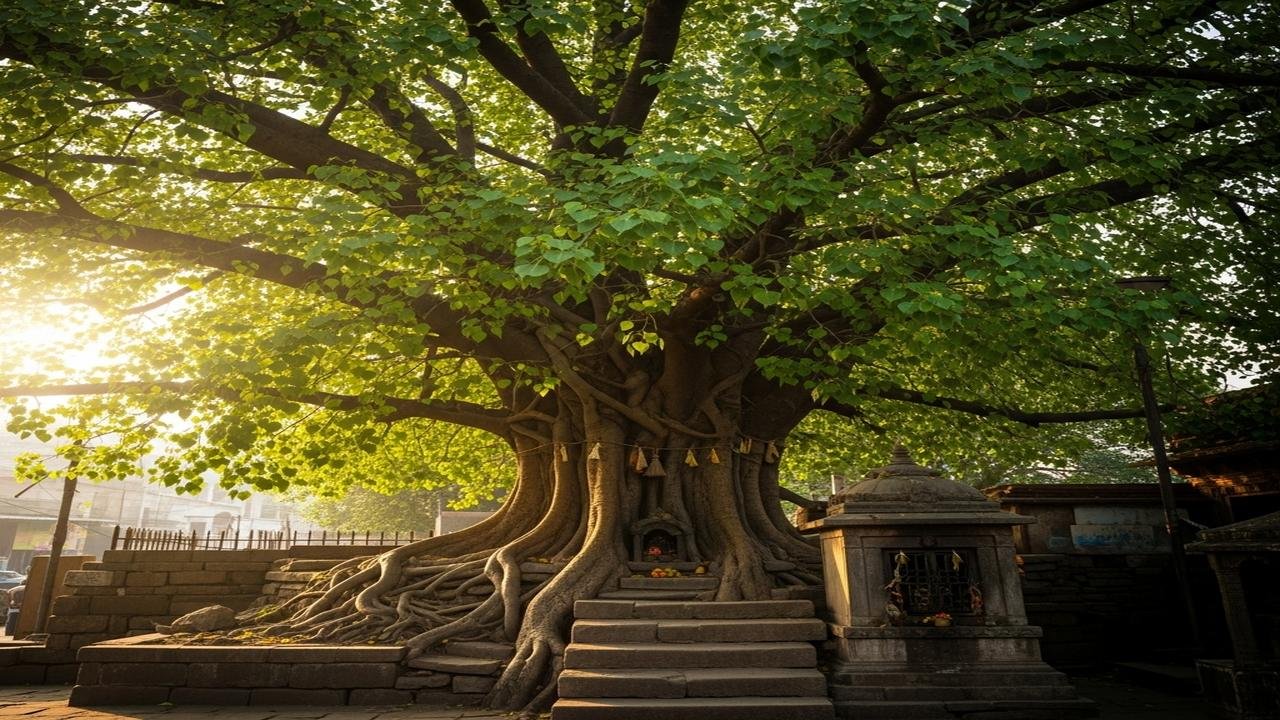You Will Not Believe What the Peepal Tree Symbolizes

The Spiritual Symbolism of the Peepal Tree
When I was a child, my grandmother would pause on our way home to touch the trunk of an old peepal tree near the temple. She would close her eyes, whisper a prayer, and smile as if speaking to an old friend. That simple act carried a whole world of faith, memory, and meaning. The peepal tree has long been more than just a tree in Indian life; it is a living symbol of the sacred, the sheltering, and the eternal.
Roots in story and scripture
The peepal (Ficus religiosa) appears again and again in our stories. In Hindu scriptures and local folk tales it is often seen as a home for gods and spirits. For Buddhists, its most famous role is as the Bodhi tree — the very tree under which Siddhartha Gautama found enlightenment. That moment changed the world, and the peepal’s leaves and trunk became a quiet sign of awakening and inner light.
What the peepal symbolizes
The shape of the peepal’s heart-shaped leaves suggests compassion and love. Its long life and ability to grow from a small seed into a vast canopy speak of endurance and renewal. The tree’s deep roots and spreading branches become a natural picture of family, community, and shelter. Spiritually, the peepal often stands for:
- Awakening: Like the Buddha’s enlightenment, the peepal invites stillness and self-discovery.
- Continuity: Its long life reminds us of cycles—birth, death, and rebirth—important themes in Hindu thought.
- Shelter and community: Villagers still gather beneath its shade for meetings, stories, and festivals.
- Unity of life: Hosting birds, insects, and small animals, the peepal shows how all life is connected.
Traditions and practices
Across India, many devotional practices center around the peepal. On Saturdays, people often visit peepal trees to offer water, light a small lamp, or tie a thread around the trunk while making a wish. During certain festivals and on Amavasya (new moon), devotees place flowers and chant mantras. In some regions, women perform rituals around large trees to pray for family well-being.
Temples commonly plant peepal trees in their courtyards, creating living sanctuaries for prayer and quiet reflection. It is customary to walk around the tree, offer food to birds, or simply sit and meditate. These simple acts build a sense of belonging and invite the sacred into everyday life.
Healing and ecology
Beyond devotion, the peepal plays a practical role. It releases oxygen even at night, offers cooling shade in hot summers, and supports a rich variety of life. Traditional medicine recognizes parts of the tree for treating common ailments. Today, conservation laws in many places protect peepal trees because they are important both spiritually and ecologically.
Modern meanings
In the modern city, a lone peepal outside an apartment building becomes a place where neighbors meet and children climb. In yoga and meditation centers, practitioners often sit beneath its branches to deepen their practice. For many of us, touching the old bark or watching sunlight through the leaves brings a quiet reminder: we are part of something larger than ourselves.
On padmabuja.com, where we honour festivals, temples, and the living threads of belief, the peepal tree appears as a gentle teacher. It asks us to be patient, to shelter one another, and to keep a quiet respect for life’s mysteries.
Conclusion
The peepal is more than a symbol; it is a living bridge between earth and spirit. When you next pass a peepal tree, pause for a moment. Touch its trunk, breathe, and listen — you may hear centuries of devotion whispering through its leaves.
